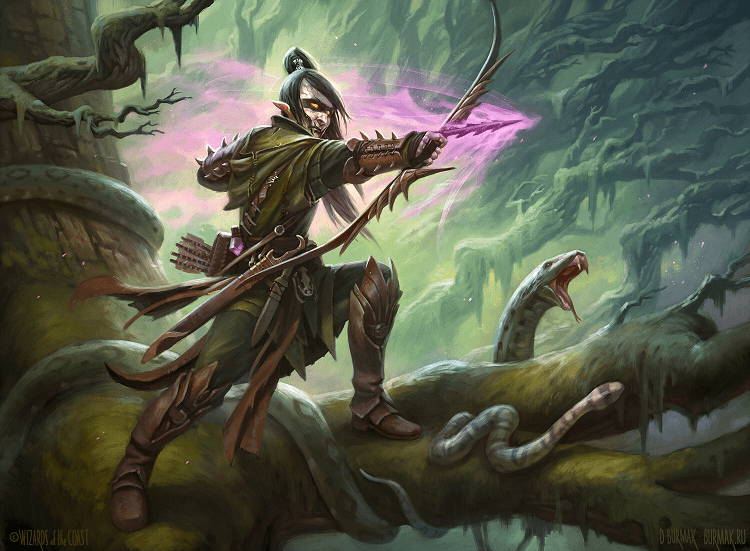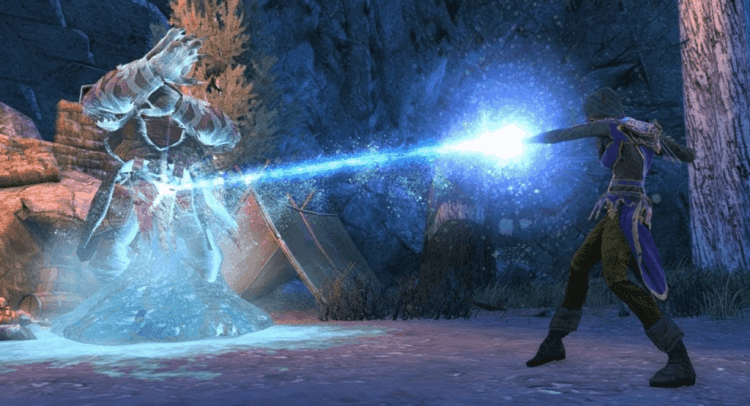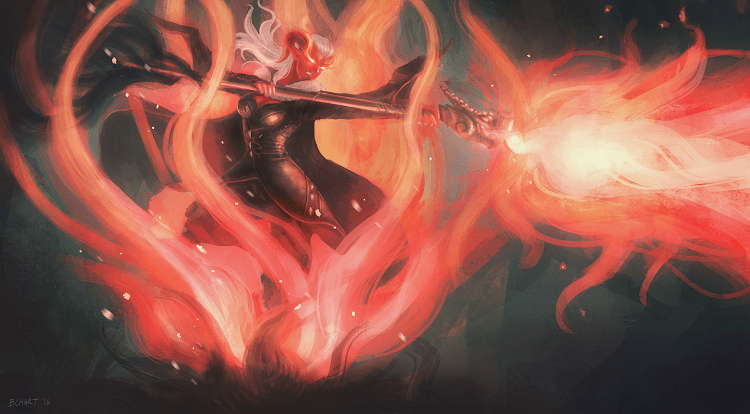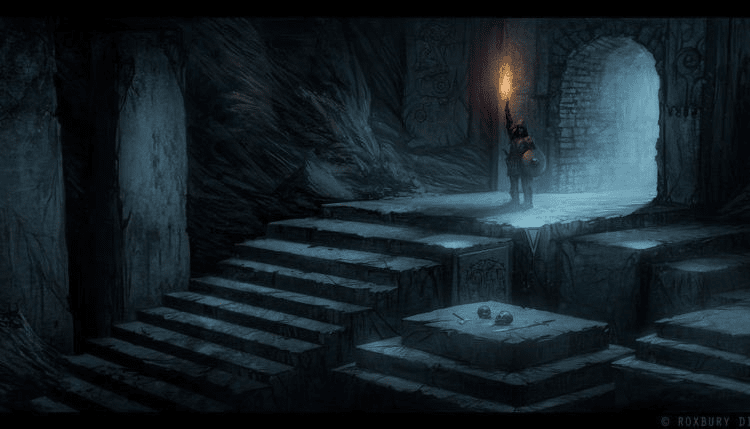DnD 5e comes with a plethora of spells and magical effects for players to choose from when building their character. The list is routinely expanded upon when 5e receives new supplemental books to give players new options to explore and play around with.
With how open tabletop RPGs can be, however, it is impossible for the system to provide a spell for every situation or type of character. So, that is where 5e’s handy Homebrew Spell rules come in handy.
Welcome to a guide to DnD homebrew spells ideas.
Things to Consider Before Homebrewing Spells
There are a few good reasons you may want to homebrew your spell in 5e. You may want to give your antagonist a unique spell to intimidate your players. One of your players could also want to go for a very particular style of character that there aren’t enough options for in the standard 5e rules.
Or maybe you’ve always had an idea for a spell you want to see in action. Then, you’ll have two options to homebrew your spell. You can either re-flavor a spell already in the game or build a new one from scratch.
Re-flavoring a spell is best when there is already a spell similar to the one you want to end up with. This can help you save an incredible amount of time.
I used this for one player who wanted to make a Sorcerer themed around an Earthbender from Avatar: The Last Airbender. Rather than making dozens of earth-themed spells to replace those already in 5e, I re-flavored the spells he took to fit his character’s flavor.
There are some spells that this won’t work for, but re-flavoring their desired spells can allow your players to still play the kind of character that they want to play. For example, my player wanted to take the Fireball spell.
So, when he used the Fireball spell, I would describe it instead as him throwing a massive boulder torn from the ground. Then, when the boulder hit the ground, it would explode to damage nearby enemies. Or, you could re-flavor Mage Armor to cover the character in hard soil and pieces of rocks for extra protection.
If you instead want to create a spell that doesn’t act quite like anything currently in the game, you’ll have to fully homebrew it from scratch.
How to Homebrew a Spell From Scratch

When creating a spell from scratch, there is little instruction in the base rules for 5e. However, these instructions are good to keep in mind. Found on page 283 of the Dungeon Master’s Guide, there are a few pieces of advice in the sparse paragraphs that offer some helpful advice.
First, the book makes sure to point out that you shouldn’t make general use of spells that are too specific. If you create a spell that can only be used against one particular type of enemy or morality, your players will likely not take it.
However, you can make more specific spells if you plan on having them play a key role later on in the campaign and let your players know so ahead of time.
The second useful advice in the official rules is to not make spells that are too powerful. If your players take a homebrew spell and only use that one, it’s often a good sign that it is overpowered.
Finally, you should keep in mind that each type of caster tends to focus on particular types of spells. So, when you assign your homebrew spell a class, make sure not to homogenize the casting classes too much. For example, Wizards shouldn’t get healing spells, while Clerics shouldn’t get summoning spells.
The most helpful part of this Dungeon Master’s Guide section is found on page 285. At the top of the page is a table of the damage dice your spells should have, depending on their level.
These values can also be used for healing spells, although cantrips shouldn’t do any healing because doing so would break combat encounters for the entire game.
When using this table, remember that you don’t have to use the same dice in the table and can instead use other configurations as long as you keep the average damage similar. The table is below.
| Homebrew Spell Level | Single Target | Multiple Target |
| Cantrip | 1d10 | 1d6 |
| 1st Level | 2d10 | 2d6 |
| 2nd Level | 3d10 | 4d6 |
| 3rd Level | 5d10 | 6d6 |
| 4th Level | 6d10 | 7d6 |
| 5th Level | 8d10 | 8d6 |
| 6th Level | 10d10 | 11d6 |
| 7th Level | 11d10 | 12d6 |
| 8th Level | 12d10 | 13d6 |
| 9th Level | 15d10 | 14d6 |
One final important note about determining the effect of your homebrewed spells is that the table assumes that a saving throw determines the damage it deals.
This means that it accounts for the standard arrangement of a target taking total damage on a failed saving throw and half on a successful one. If you instead want to make a spell that requires an attack roll, increase the damage by 25%.
Example DnD Homebrew Spells Ideas

Weapon Absorption
- Level: 3rd
- Type: Transmutation
- Range: Touch
- Components: V, S
- Duration: 24 Hours
This spell allows you to store a weapon inside the flesh of a target creature or yourself. This will enable you to hide a weapon in a way that any nonmagical search cannot detect it. To cast a spell on a willing target, you have to press one hand on the target weapon and the other on the area of the person’s body where you want it stored.
You can only have one magically stored weapon in your body at a time, and it does not have any effect on the target’s body. The weapon is only removed from the holder if they use an action to draw it, the spell’s duration ends, or if they are knocked unconscious.
Read also: Comprehensive DnD Homebrew Weapons Guide.
Battering Ram
- Level: 2nd
- Type: Conjuration
- Range: 20 feet
- Components: V, S
- Duration: Instantaneous
This spell allows a caster to create a large metal pillar that appears and rushes forward to hit a single target within range. The target is forced to make a Dexterity saving throw.
On a failed saving throw, they take 3d10 bludgeoning damage, while on a successful saving throw, they take half as much. If the target fails the Dexterity saving throw, they are also pushed backward 30 feet.
Bestow Flames

- Level: 4th
- Type: Evocation
- Range: Touch
- Components: S, M, V
- Duration: Concentration up to one minute
This spell summons magical flames that spread across any weapon held by the caster. The flames can be of any color and project dim light for 30 feet.
The magical nature of the flames ensures that they only hurt targets attacked by the caster, preventing them from damaging the wielder, friendly targets, or lighting objects on fire. On a successful attack with the enflamed weapon, the magical flames deal an additional 2d12 bonus fire damage that is doubled on a critical hit.
Solidify with Earth
- Level: 2nd
- Type: Transmutation
- Range: Touch
- Components: M, V
- Duration: 1 Hour
With this spell, the caster can solidify any structure made of rock or wood with materials from the surrounding ground. When cast, the surrounding earth magically rises and covers the structure, increasing its armor class to 17 and giving it resistance against nonmagical attacks.
Devilish Hold
- Level: 9th
- Type: Conjuration
- Range: 175 feet
- Components: V, S, M
- Duration: Concentration up to ten minutes
This spell summons large spectral claws that tear through the fabric of the current plane of the caster and grab a target within range. The target creature must make a Charisma saving throw against your spell save DC. The target is considered restrained on a failed save and takes 20d6 bludgeoning damage.
Once a success, they are restrained and take half the damage. The target can decide to attempt the saving throw again at the end of their turn, taking an additional 20d6 bludgeoning damage on a failed attempt. To escape the grapple, the grappled creature has to get four successes.
Sunder Connection

- Level: 7th
- Type: Abjuration
- Range: 100 feet
- Components: V, S, M
- Duration: Concentration up to one minute
Sunder Connection allows a caster to try and disrupt the connection between a target and the source of their power. This can be separating a Cleric or Paladin from their deity, a Druid from nature, or a Warlock from their patron. The target of the spell is forced to make a Wisdom saving throw against the caster’s Spell Save DC.
On a failure, the spell’s effect is put in effect for up to its duration. If the target succeeds in their saving throw, the spell has no effect. At the end of each of its subsequent turns, it can re-attempt the saving throw, ending the spell on a successful one.
Once a creature succeeds in a saving throw against this spell, it is invulnerable to its effects for 24 hours.
Weakening Fetish
- Level: 5th
- Type: Transmutation
- Range: 150 feet
- Components: V, S, M
- Duration: Up to one month
This spell can only be cast as a ritual that takes one full hour. To complete the ritual, the caster needs a doll that loosely resembles their target as well as some hair, skin, or blood from their target as well as 1,000 gold worth of gems. Once the ritual is completed, a magic bond is forged between the doll and the target.
This connection can be dispelled or detected with the Detect Magic spell. The spell lasts up to a maximum of one month or ends early if the target it is connected to dies.
While the connection is active, the target has a disadvantage on attack rolls against the creature holding the doll, subtracts 1d4 from all of its saving throws while the doll is within 50 feet of it, and the creature holding the doll gets advantage on attack rolls against the target.
Guided Shot
- Level: 1st
- Type: Divination
- Range: 150 feet
- Components: M, V
- Duration: One round
- Casting Time: 1 Bonus Action
The caster establishes a magical connection with a projectile that they can see. Once the projectile is shot, the caster can guide its path through the air until it reaches a target.
This allows the projectile to target creatures behind full cover and allows the attack to ignore the armor class bonuses the target gets from armor. This spell cannot be used to target any creatures outside of the weapon’s normal range.
Icey Spheres

- Level: 3rd
- Type: Evocation
- Range: 60 feet
- Components: V, M
- Duration: Instantaneous
The caster summons three spheres of ice largely the size of a pineapple. Each sphere can be used to target a different enemy within range, with each attack with a sphere requiring a different attack roll.
On a successful attack roll, each sphere of ice deals 2d6 cold damage to the target. You can cast Icey Spheres using higher-level spell slots, and each spell slot level higher than the third used allows you to summon an additional ice sphere.
Winged Spurs
- Level: 6th
- Type: Transmutation
- Range: 30 feet
- Components: V, S
- Duration: 8 Hours
The caster targets up to three mounts within range. Golden light extends from their hand and envelops the mount’s hooves, paws, or feet. The affected mounts gain flight speed equal to their base movement speed for the duration. Winged Spurs can be cast using higher-level spell slots to target two additional mounts per level above sixth.
Silent Entry
- Level: Cantrip
- Type: Illusion
- Range: Touch
- Components: V, S
- Duration: Instantaneous
This cantrip is a simple spell that silences the sounds of any opening door or chest. This spell can be applied before or while opening the object. However, it can only be applied to the intended method of opening the object. So, it cannot be used to silence a window breaking or taking a door off its hinges.
Darkness Wall

- Level: 2nd
- Type: Illusion
- Range: 30 feet
- Components: S, V, M
- Duration: One Minute
This spell summons a wall of darkness up to 60 feet in length, 20 feet in height, and five feet in thickness. The caster can determine the wall’s dimensions, but it cannot pass through solid objects like walls.
The wall blocks all magical and nonmagical light from passing through it and cannot be seen even by creatures with darkvision. The wall can be passed through with a successful Constitution saving throw.
Nurturing Entity
- Level: 2nd
- Type: Conjuration
- Range: 30 feet
- Components: V, S
- Duration: Concentration up to one minute
This spell allows the caster to summon a spirit to an unoccupied space they can see within range. Until the spell is ended, the caster can use a bonus action to have the spirit heal an ally of the caster within 30 feet once per round for 1d6 hit points.
If the spell is cast with a spell slot higher than the 2nd level, the spirit’s healing increases by 1d6 for each additional level. The healing powers of the Nurturing Entity do not affect constructs or undead creatures.
Flame Chain

- Level: 4th
- Type: Evocation
- Range: Touch
- Components: V, S, M
- Duration: Concentration up to one minute
While this spell is active, any creature the caster hits with a melee attack is enveloped by a ring of fire. The ring is connected to the caster by a flaming chain, which fades at the beginning of the caster’s next turn.
If the creature enveloped by the ring of fire moves at all while the ring is around them, the caster can have it deal 2d8 fire damage to them.
FAQs
Question: Can You Use Homebrew Spells on D&D Beyond?
Answer: Yes, if you navigate the Collections menu, there is an option for creating your custom spell.
Question: Where are Homebrew Spells Described in the Core Rules for 5e?
Answer: You can find the short section of rules about homebrewing spells in 5e on page 283 of the Dungeon Master’s Guide.
Question: How much Damage Should a Seventh-level Spell Deal in 5e?
Answer: The Dungeon Master’s guide recommends having a seventh-level spell deal 11d10 damage if targeting a single target or 12d6 if targeting multiple.
Conclusion
Homebrewing your own spells can be a lot of work for a Dungeon Master. However, doing so can also help you create some unique interactions and help your players have more special characters and playstyle.
If any of the above examples I’ve provided seem interesting to you, feel free to use them in your campaign or modify them a bit to make your own versions.
- Steel Defender 5e Guide - September 5, 2022
- Harengon 5e Guide - August 24, 2022
- Shambling Mound 5e Guide: The Most Terrifying Plant - August 21, 2022

